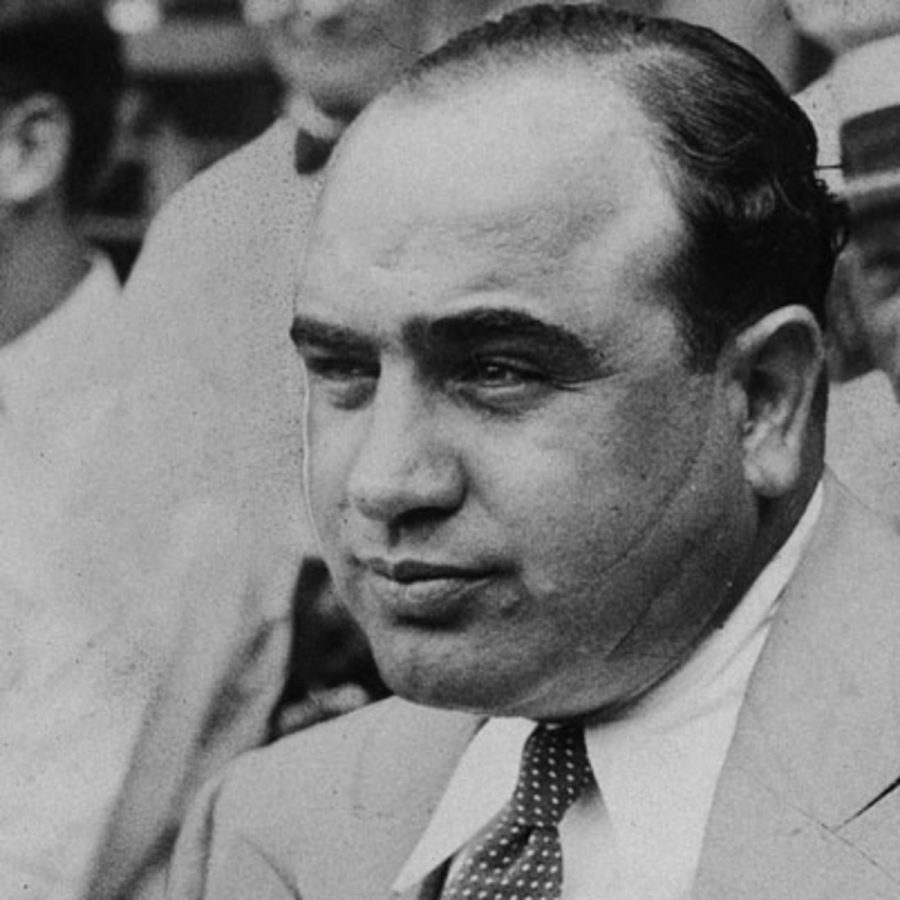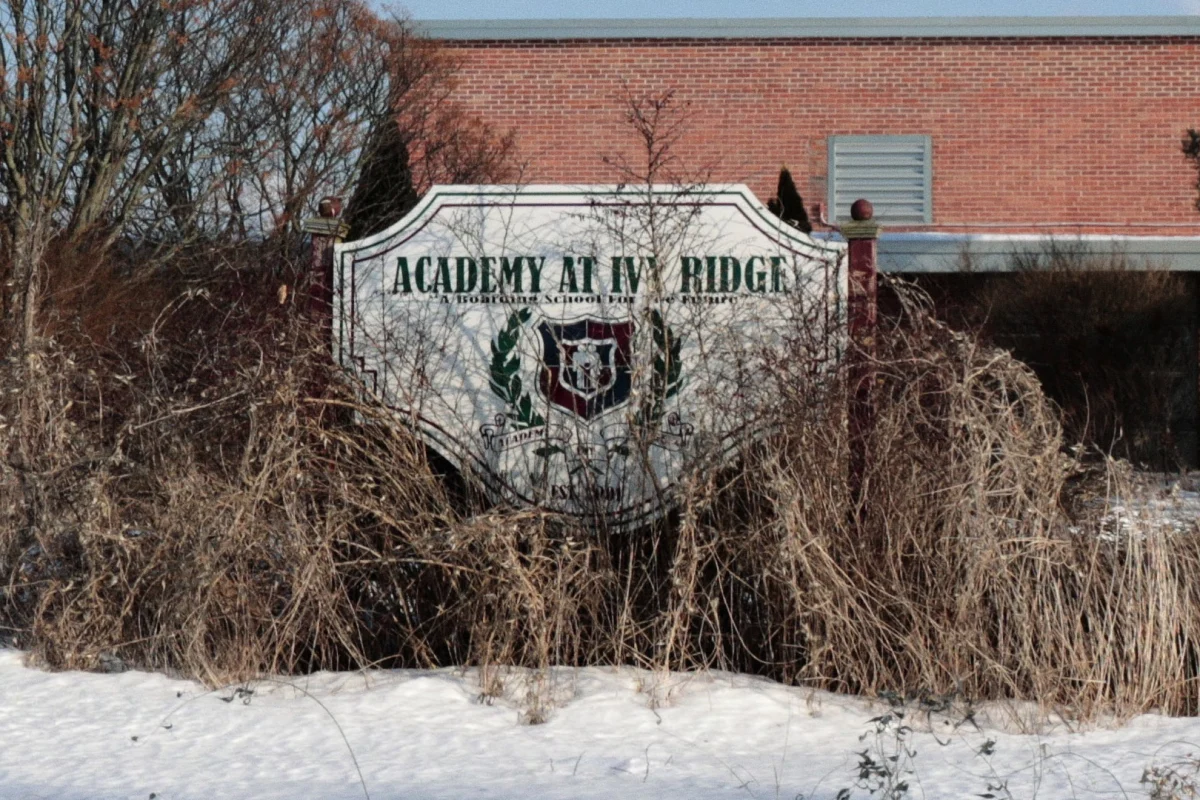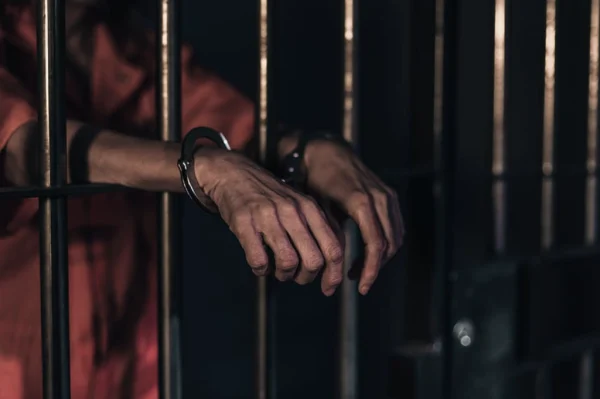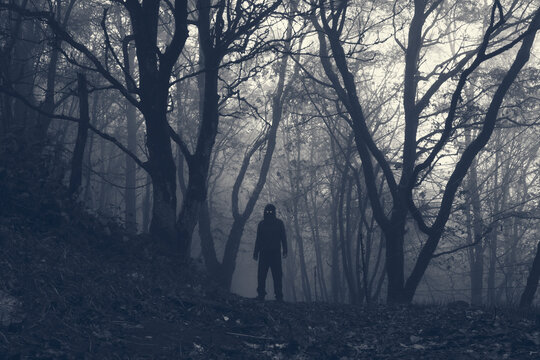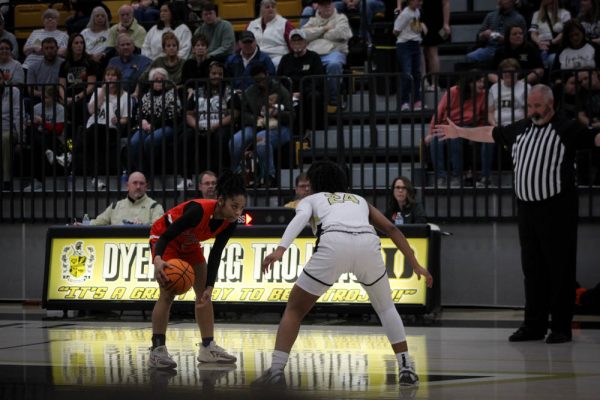Al Capone and the St. Valentine’s Day Massacre
February 14, 2020
Al “Scarface” Capone
Al Capone, also known as Scarface, had been a trouble-maker even before he became Scarface. He had gone to school until he was 14, when he was in 6th grade. The reason being that he struck a teacher. He worked many different jobs, ranging from a bowling alley pinboy to a cutter at a book bindery, and he worked those jobs all while being in two “kid gangs”. These gangs were called the South Brooklyn Rippers and Forty Thieves Juniors, they were known for petty crimes and vandalism, which is something that had been common in New York at the time. Later on, Capone joined the James Street Boys gang, it was run by Johnny Torrio, who was associated with the Five Points gang. Torrio would go on to become Capone’s lifelong mentor. When Capone was just 16,  he also joined the Five Points gang, where he served Frank Ioele(who was more commonly known as Frankie Yale) as a bartender in Yale’s brothel-saloon called the Harvard Inn. Before he turned 21, Capone had been involved in quite a few particularly violent incidents. One incident that is most notable is when Frank Galluccio slashed Capone’s left cheek with a knife/razor for making crude comments to his sister. This is what would lead to him later being called “Scarface”. Later on, Capone shot and killed the winner of a neighborhood craps game while robbing him of his winnings. Because no one had witnessed the murder, Capone was let go despite being questioned by the police. Another incident involving Capone and his violence is the time that he mercilessly assaulted a low-ranking member of the White Hand gang before leaving them to die. He then sent his wife and child to work for Torrio in Chicago because the gang had promised retribution. In 1909, Capone moved from New York to Chicago to help run the brothel business alongside Big Jim Colosimo. Ten years after Capone’s arrival, Colosimo was assassinated by either Yale or Capone to make room for Torrio’s rule. Then, Prohibition began. Prohibition was the 18th amendment that was enforced to ban the manufacturing, transportation, and sale of intoxicating liquors. This resulted in the growth of bootlegging operations. These operations brought in intense wealth to those who got away with it. In 1924, Al Capone murdered Joe Howard, who had earlier assaulted one of Capone’s friends. An aggressive prosecutor of Capone’s, William McSwiggen, attempted to indict Capone for the murder, but failed when each witness of the incident, fearing for their lives, had suddenly lost their memories of the time. Later on, Capone would send Yale and a few other associates to murder gang leader Dilan O’Bannion in his flower shop. Two associates of O’Bannion had previously attempted and failed to murder John Torrio in 1925, their names were Hymie Weiss and George “Bugs” Moran. Torrio later went on to Italy, making Capone the crime czar of Chicago. This is when Capone’s gang activity had been most notable.
he also joined the Five Points gang, where he served Frank Ioele(who was more commonly known as Frankie Yale) as a bartender in Yale’s brothel-saloon called the Harvard Inn. Before he turned 21, Capone had been involved in quite a few particularly violent incidents. One incident that is most notable is when Frank Galluccio slashed Capone’s left cheek with a knife/razor for making crude comments to his sister. This is what would lead to him later being called “Scarface”. Later on, Capone shot and killed the winner of a neighborhood craps game while robbing him of his winnings. Because no one had witnessed the murder, Capone was let go despite being questioned by the police. Another incident involving Capone and his violence is the time that he mercilessly assaulted a low-ranking member of the White Hand gang before leaving them to die. He then sent his wife and child to work for Torrio in Chicago because the gang had promised retribution. In 1909, Capone moved from New York to Chicago to help run the brothel business alongside Big Jim Colosimo. Ten years after Capone’s arrival, Colosimo was assassinated by either Yale or Capone to make room for Torrio’s rule. Then, Prohibition began. Prohibition was the 18th amendment that was enforced to ban the manufacturing, transportation, and sale of intoxicating liquors. This resulted in the growth of bootlegging operations. These operations brought in intense wealth to those who got away with it. In 1924, Al Capone murdered Joe Howard, who had earlier assaulted one of Capone’s friends. An aggressive prosecutor of Capone’s, William McSwiggen, attempted to indict Capone for the murder, but failed when each witness of the incident, fearing for their lives, had suddenly lost their memories of the time. Later on, Capone would send Yale and a few other associates to murder gang leader Dilan O’Bannion in his flower shop. Two associates of O’Bannion had previously attempted and failed to murder John Torrio in 1925, their names were Hymie Weiss and George “Bugs” Moran. Torrio later went on to Italy, making Capone the crime czar of Chicago. This is when Capone’s gang activity had been most notable.
The St. Valentine’s Day Massacre
On February 14, 1929, what is considered the “most spectacular gangland slaying in mob history” occurred. On that day, Capone attempted to eliminate George “Bugs” Moran and the majority of his Northside gang. The plan was thought to be devised by “Machine Gun” Jack McGurn, Capone’s henchman. The plan consisted of a loyal bootlegger would lure Moran and his gang to a warehouse under the pretense that they would receive smuggled whiskey for a low price. The “delivery” was meant to happen at 2122 North Clark Street in Chicago at 10:30 AM on, of course, Valentine’s Day. Capone was staying at a house in Miami, Florida as the action was happening, to avoid himself being assassinated. On the morning of the act, Moran’s men waited for him at the warehouse, the men were: Frank and Pete Gusenburg, James Clark, and Reinhardt Schwimmer. George “Bugs” Moran was running late that morning. As the warehouse was in sight for Moran, so was a police car. He watched as five men in police uniforms made their way into the warehouse, he figured that it was just a bust, so he ran from the scene to avoid being arrested. Inside the warehouse, Moran’s men were confronted by the “police”. They followed the instructions of the uniformed men, as they had also assumed it was a bust. They were lined up against a wall, and the men who turned out to be Capone’s hitmen opened fire with Thompson submachine guns. They killed 6 out of 7 of the men immediately. Frank Gusenburg, despite having 22 bullet wounds, survived until he made it to the Alexian Brothers Hospital. The crime was on the front page of every newspaper and magazine in the country, making Capone not only more recognizable to the public, but also to the law enforcement. George “Bugs” Moran was asked about the crime and his take on it was that “Only Capone kills like that.” Because Capone was in Florida and McGurn also had an alibi, no one was tried and the case was let go.
Al Gets Taken to Alcatraz
 In 1929, the Bureau of Investigation’s involvement with Capone was made more prominent at his reluctance to be tried on March 12, 1929. The trial was in response to a subpoena. On March 11, Capone’s team postponed the trial due to him supposedly having bronchial pneumonia. The date was set to be on March 20th that year. While Capone was said to have bronchial pneumonia, he was seen attending a race track, made a plane trip from Bimini, a cruise to Nassau, and was interviewed at the Miami- Dade County Solicitor. He did each of these things in seemingly good health. He did appear in court on March 20th, and he finished his testimony on March 27th that week. As he was leaving the courtroom on the 27th, he was arrested for contempt of court, which could lead someone to be jailed for up to 1 year. His bail was set at $5,000 and he was released. Later that year, on May 17, Capone and his bodyguard were arrested in Philadelphia for the carrying of concealed deadly weapons. They were sentenced to one year of prison, but Capone was released 9 months later on March 17, 1930 for good behavior. On February 28, 1931, Capone was arrested for being found guilty of contempt of court and was sentenced for 6 months in the Cook County Jail, but the charge was later dismissed. Later that year, Capone was faced with charges of tax evasion and prohibition charges. He told reporters that he had struck a deal for two-and-a-half years, but the judge told him that he himself was not bound by any deal. In October and November of that same year, Capone was sentenced to 11 years in federal prison, fined
In 1929, the Bureau of Investigation’s involvement with Capone was made more prominent at his reluctance to be tried on March 12, 1929. The trial was in response to a subpoena. On March 11, Capone’s team postponed the trial due to him supposedly having bronchial pneumonia. The date was set to be on March 20th that year. While Capone was said to have bronchial pneumonia, he was seen attending a race track, made a plane trip from Bimini, a cruise to Nassau, and was interviewed at the Miami- Dade County Solicitor. He did each of these things in seemingly good health. He did appear in court on March 20th, and he finished his testimony on March 27th that week. As he was leaving the courtroom on the 27th, he was arrested for contempt of court, which could lead someone to be jailed for up to 1 year. His bail was set at $5,000 and he was released. Later that year, on May 17, Capone and his bodyguard were arrested in Philadelphia for the carrying of concealed deadly weapons. They were sentenced to one year of prison, but Capone was released 9 months later on March 17, 1930 for good behavior. On February 28, 1931, Capone was arrested for being found guilty of contempt of court and was sentenced for 6 months in the Cook County Jail, but the charge was later dismissed. Later that year, Capone was faced with charges of tax evasion and prohibition charges. He told reporters that he had struck a deal for two-and-a-half years, but the judge told him that he himself was not bound by any deal. In October and November of that same year, Capone was sentenced to 11 years in federal prison, fined
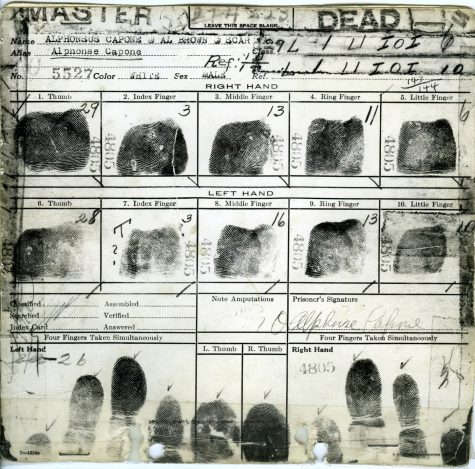 $50,000, charged $7,692 for court costs, and $215,000 on due taxes. He was detained in the Cook County Jail, then he denied certain appeals, which sent him to the U.S Penitentiary in Atlanta and later Alcatraz in August of 1934. In Alcatraz, Capone had tried to bribe his way into being in control, but the prison’s first warden quickly shut down that idea, to which Capone said, “It looks like Alcatraz has me licked.” The prison served 3 meals a day, as James A. Johnston, the first warden, had believed that good food would keep the prisoners from rioting. Movies were shown for prisoners with good behavior, as well as a 15,000 book library and 75 magazine subscriptions. Capone played the banjo in the inmate band called The Rock Islanders. Although there were many perks to being held at the prison, prisoners’ bad behavior had come from the boredom of being there. Many prisoners were attacked, Capone being one of them. In 1936, he was stabbed with half a pair of scissors by James “Tex” Lucas in the prison’s barber shop. Witnesses claim that Capone later beat Lucas with his banjo in retaliation. In 1939, Capone left Alcatraz due to exposure to syphilis, which had started to affect his brain. He was taken to Terminal Island Prison, located in Southern California, to serve the rest of his sentence.
$50,000, charged $7,692 for court costs, and $215,000 on due taxes. He was detained in the Cook County Jail, then he denied certain appeals, which sent him to the U.S Penitentiary in Atlanta and later Alcatraz in August of 1934. In Alcatraz, Capone had tried to bribe his way into being in control, but the prison’s first warden quickly shut down that idea, to which Capone said, “It looks like Alcatraz has me licked.” The prison served 3 meals a day, as James A. Johnston, the first warden, had believed that good food would keep the prisoners from rioting. Movies were shown for prisoners with good behavior, as well as a 15,000 book library and 75 magazine subscriptions. Capone played the banjo in the inmate band called The Rock Islanders. Although there were many perks to being held at the prison, prisoners’ bad behavior had come from the boredom of being there. Many prisoners were attacked, Capone being one of them. In 1936, he was stabbed with half a pair of scissors by James “Tex” Lucas in the prison’s barber shop. Witnesses claim that Capone later beat Lucas with his banjo in retaliation. In 1939, Capone left Alcatraz due to exposure to syphilis, which had started to affect his brain. He was taken to Terminal Island Prison, located in Southern California, to serve the rest of his sentence.

